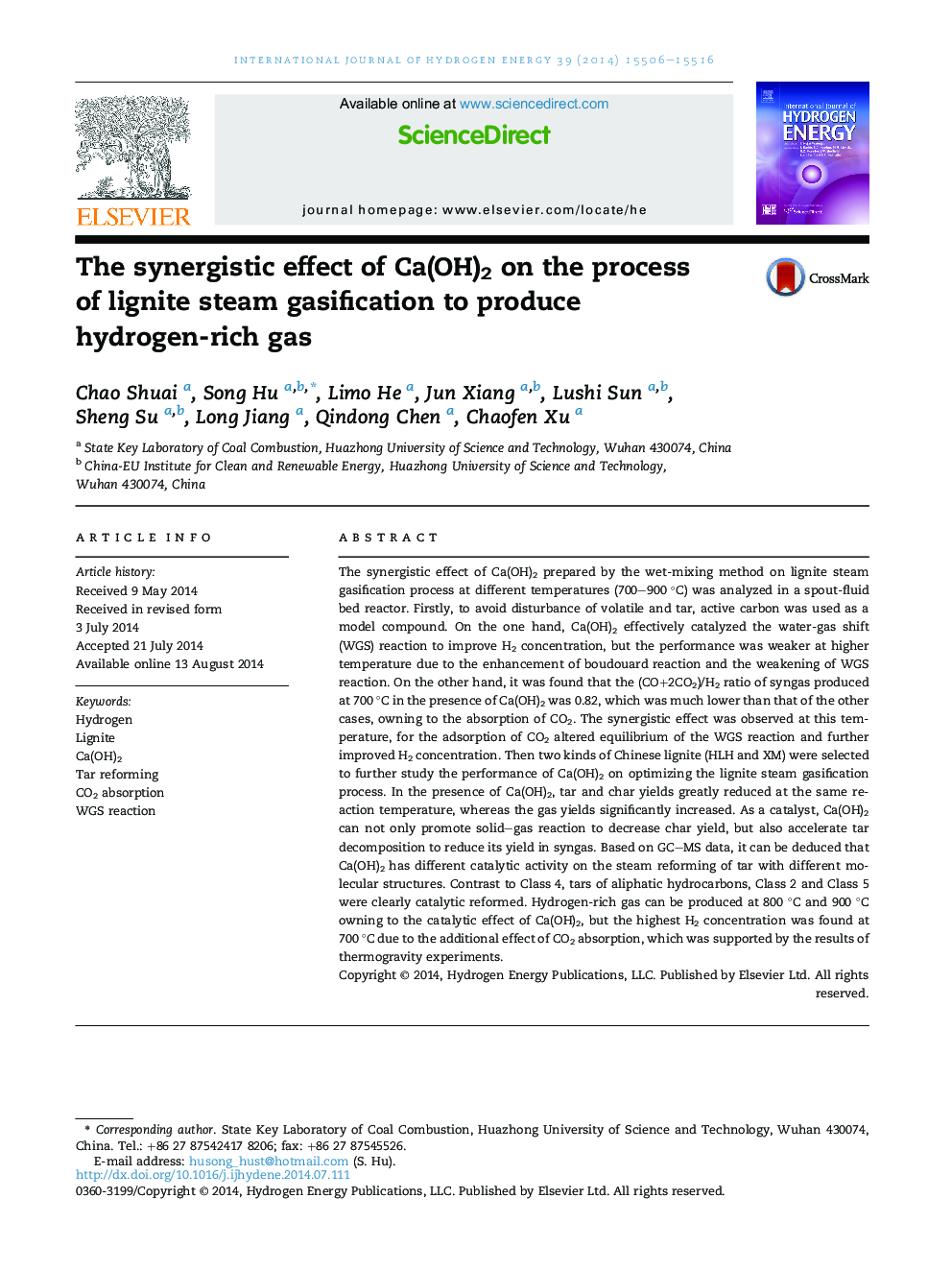| کد مقاله | کد نشریه | سال انتشار | مقاله انگلیسی | نسخه تمام متن |
|---|---|---|---|---|
| 1272388 | 1497481 | 2014 | 11 صفحه PDF | دانلود رایگان |

• Synergistic effect of Ca(OH)2 on the H2-rich gas production was observed at 700 °C.
• Ca(OH)2 significantly reduced the char, tar yield and improved the H2 concentration.
• Effect of Ca(OH)2 on tar composition was analyzed.
• Effect of Ca(OH)2 content on product yields was studied.
The synergistic effect of Ca(OH)2 prepared by the wet-mixing method on lignite steam gasification process at different temperatures (700–900 °C) was analyzed in a spout-fluid bed reactor. Firstly, to avoid disturbance of volatile and tar, active carbon was used as a model compound. On the one hand, Ca(OH)2 effectively catalyzed the water-gas shift (WGS) reaction to improve H2 concentration, but the performance was weaker at higher temperature due to the enhancement of boudouard reaction and the weakening of WGS reaction. On the other hand, it was found that the (CO+2CO2)/H2 ratio of syngas produced at 700 °C in the presence of Ca(OH)2 was 0.82, which was much lower than that of the other cases, owning to the absorption of CO2. The synergistic effect was observed at this temperature, for the adsorption of CO2 altered equilibrium of the WGS reaction and further improved H2 concentration. Then two kinds of Chinese lignite (HLH and XM) were selected to further study the performance of Ca(OH)2 on optimizing the lignite steam gasification process. In the presence of Ca(OH)2, tar and char yields greatly reduced at the same reaction temperature, whereas the gas yields significantly increased. As a catalyst, Ca(OH)2 can not only promote solid–gas reaction to decrease char yield, but also accelerate tar decomposition to reduce its yield in syngas. Based on GC–MS data, it can be deduced that Ca(OH)2 has different catalytic activity on the steam reforming of tar with different molecular structures. Contrast to Class 4, tars of aliphatic hydrocarbons, Class 2 and Class 5 were clearly catalytic reformed. Hydrogen-rich gas can be produced at 800 °C and 900 °C owning to the catalytic effect of Ca(OH)2, but the highest H2 concentration was found at 700 °C due to the additional effect of CO2 absorption, which was supported by the results of thermogravity experiments.
Journal: International Journal of Hydrogen Energy - Volume 39, Issue 28, 23 September 2014, Pages 15506–15516